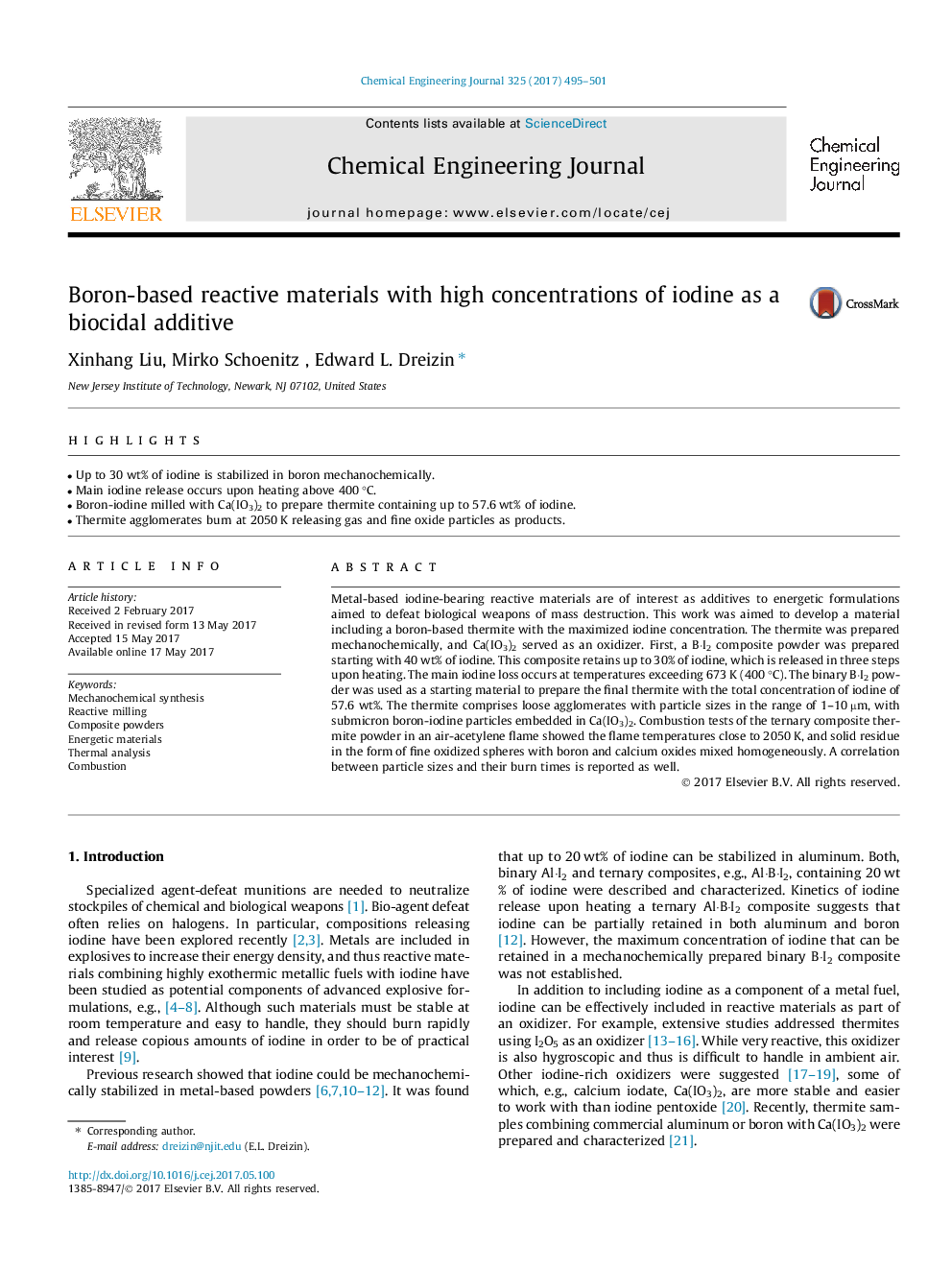| Article ID | Journal | Published Year | Pages | File Type |
|---|---|---|---|---|
| 6466216 | Chemical Engineering Journal | 2017 | 7 Pages |
â¢Up to 30 wt% of iodine is stabilized in boron mechanochemically.â¢Main iodine release occurs upon heating above 400 °C.â¢Boron-iodine milled with Ca(IO3)2 to prepare thermite containing up to 57.6 wt% of iodine.â¢Thermite agglomerates burn at 2050 K releasing gas and fine oxide particles as products.
Metal-based iodine-bearing reactive materials are of interest as additives to energetic formulations aimed to defeat biological weapons of mass destruction. This work was aimed to develop a material including a boron-based thermite with the maximized iodine concentration. The thermite was prepared mechanochemically, and Ca(IO3)2 served as an oxidizer. First, a B·I2 composite powder was prepared starting with 40 wt% of iodine. This composite retains up to 30% of iodine, which is released in three steps upon heating. The main iodine loss occurs at temperatures exceeding 673 K (400 °C). The binary B·I2 powder was used as a starting material to prepare the final thermite with the total concentration of iodine of 57.6 wt%. The thermite comprises loose agglomerates with particle sizes in the range of 1-10 µm, with submicron boron-iodine particles embedded in Ca(IO3)2. Combustion tests of the ternary composite thermite powder in an air-acetylene flame showed the flame temperatures close to 2050 K, and solid residue in the form of fine oxidized spheres with boron and calcium oxides mixed homogeneously. A correlation between particle sizes and their burn times is reported as well.
